- March 04, 2024
- By Karen Shih ’09
From little kids dancing with hoops in hand to couples balancing a potato together on their foreheads, participants at this year’s UMD Pow Wow watched exuberant Native drummers and dancers while learning about Indigenous traditions.
“We wanted to bring in audience members—anyone could participate in any of the dances,” said Kyrsha Balderas, coordinator for Native and Indigenous student involvement in the Office of Multicultural Involvement and Community Advocacy (MICA), which organized Saturday’s event at Ritchie Coliseum.
Many of the 450-plus attendees got on their feet for the hoop dance demonstration and lesson; a candy dance to encourage kids to come to the floor; and the potato dance, a contest where pairs of people try to move to the beat without dropping the shared spud.
Tribes from across the continent were represented at the event, including the local Piscataway People, on whose ancestral land the university was built, and Navajos from out West. Intertribal dances, as well as men’s, women’s and tiny tot dance exhibitions, gave different groups a chance to show off their own traditions, while the Zotigh Singers and Stoney Creek drummers provided music throughout the afternoon.
“It warmed my heart to see everyone making connections,” Balderas said, especially Native students, who make up less than 1% of the UMD population. “There’s the cultural and educational pieces of the Pow Wow, but also the social piece of saying, ‘OK, I can walk away today knowing I made a new friend.’”
Check out scenes from Saturday’s celebration:
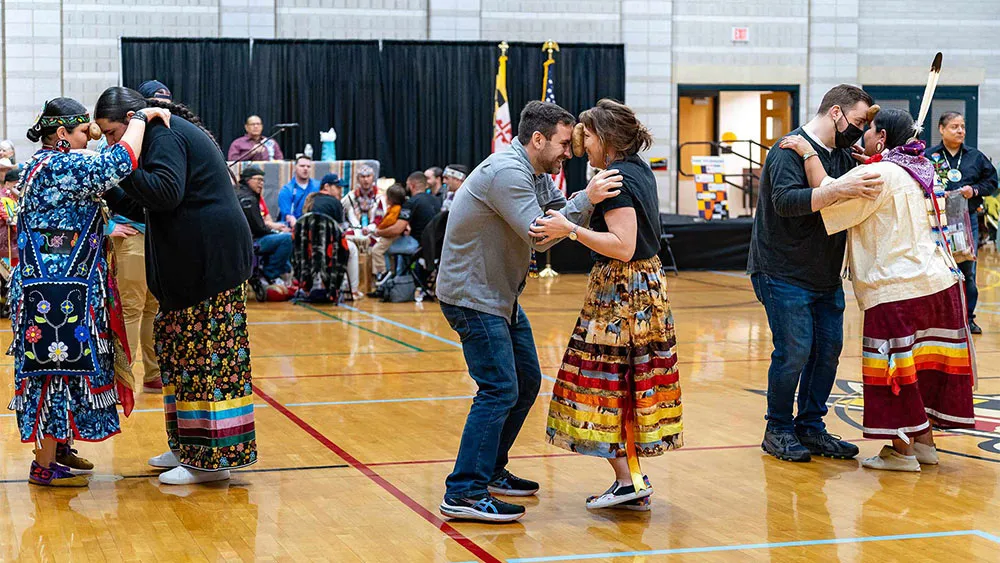
Pow Wow attendees do the potato dance, a fun tradition where couples try to keep a potato wedged between their foreheads while moving to the music. Competitors leave the floor if it drops; the last pair still dancing wins. (Photo by Jess Daninhirsch '26)
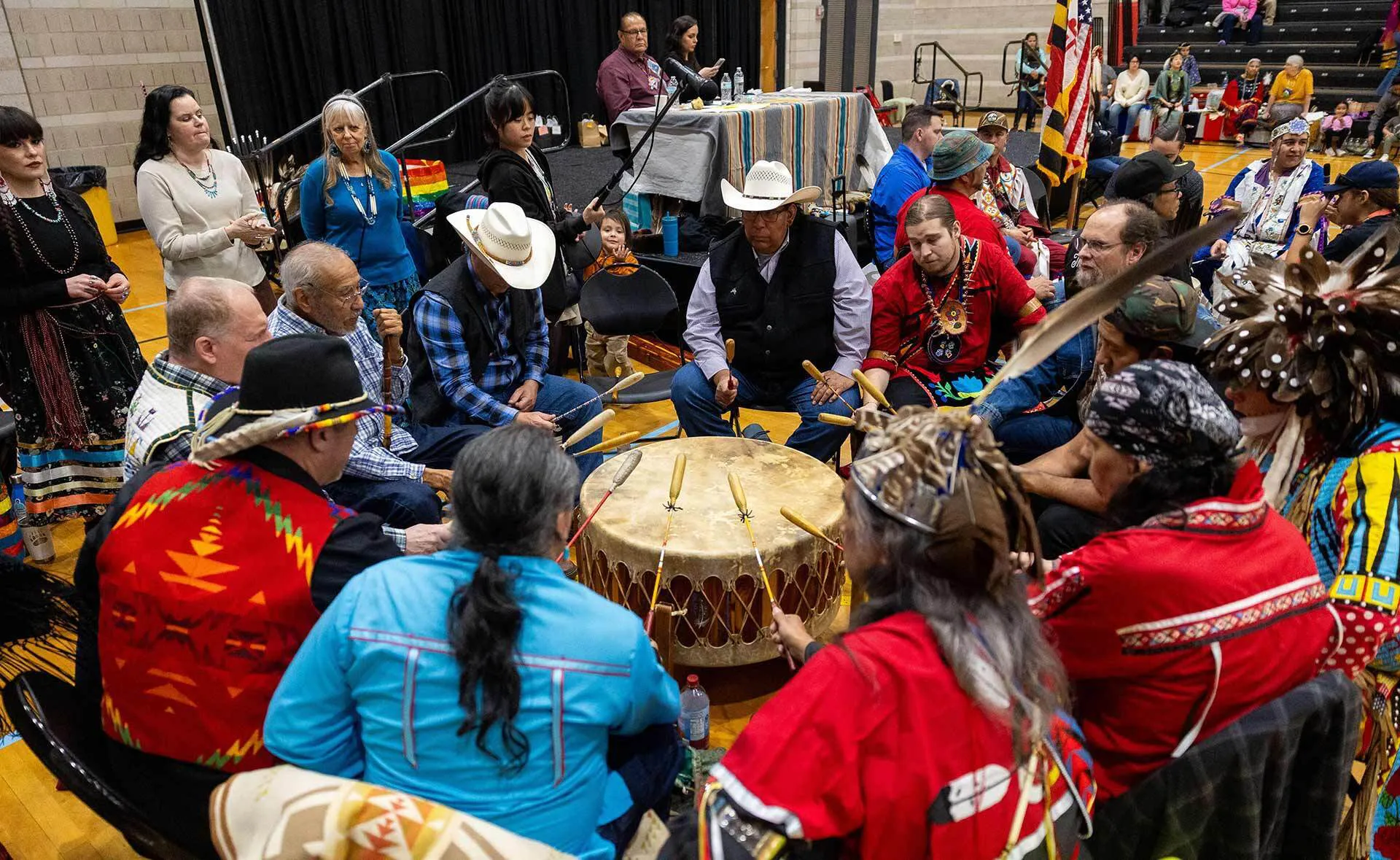
The Zotigh Singers gather around a drum to perform during the men’s northern traditional dance, while the Pow Wow’s other drumming group, the Stoney Creek Singers, observe in the background. (Photo by Riley Sims Ph.D. ’23)
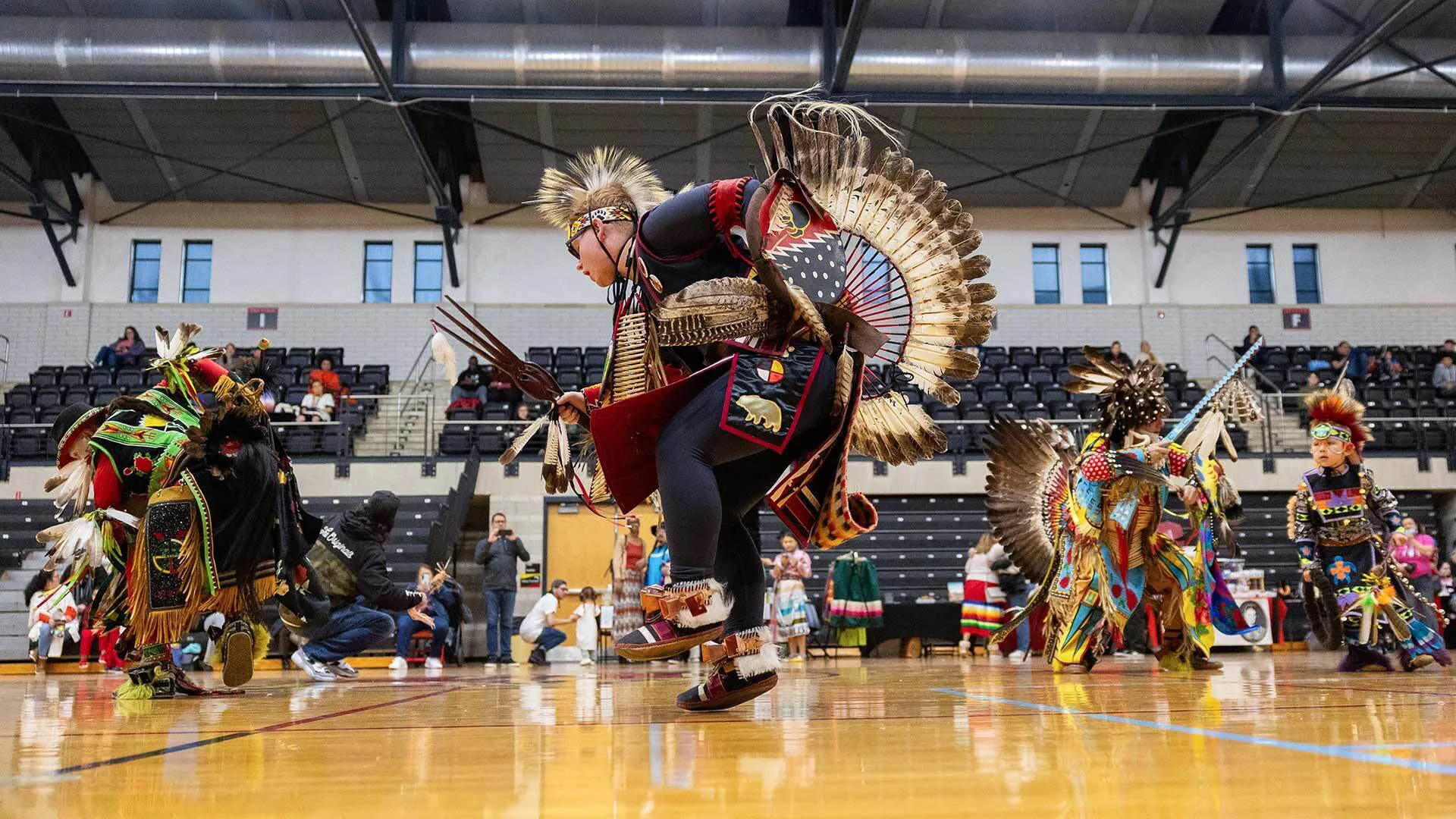
Dallas MacMahan, of the Nanticoke Lenni-Lenape Tribe, participates in the men’s northern traditional dance, conveying stories of what individuals experienced in battle. (Photo by Riley Sims Ph.D. ’23)
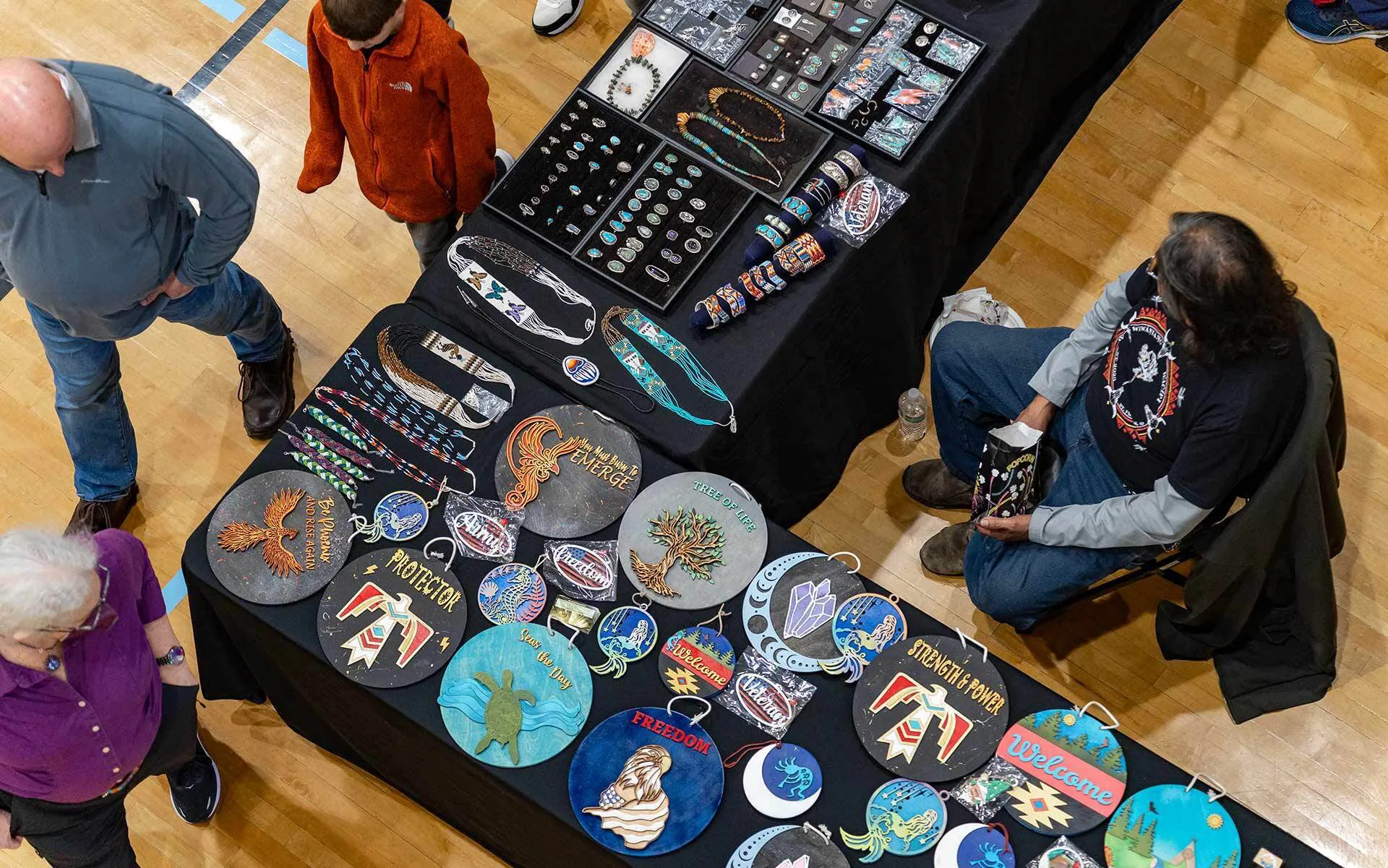
Vendors sell Native handicrafts and wares such as wall hangings, ornate beads and other jewelry at Saturday’s event. (Photo by Jess Daninhirsch '26)
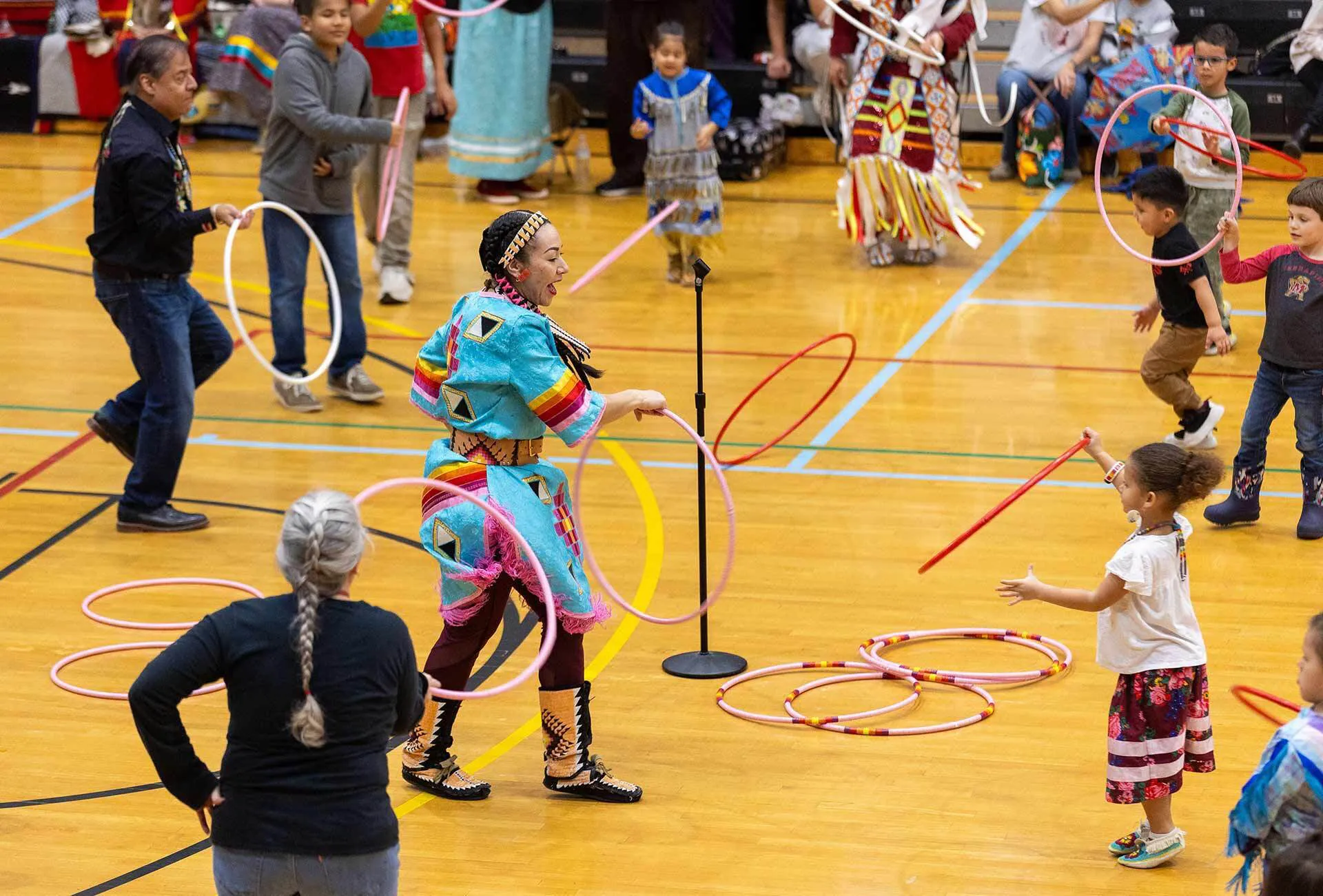
Angela Gladue of the Cree Nation leads the hoop dance, which presents a storytelling opportunity for topics like the circle of life and creation. “She was absolutely incredible and did a great job incorporating kids and audience members,” said Balderas. “She had a lot of energy—you could feel it in the arena.” (Photo by Riley Sims Ph.D. ’23)
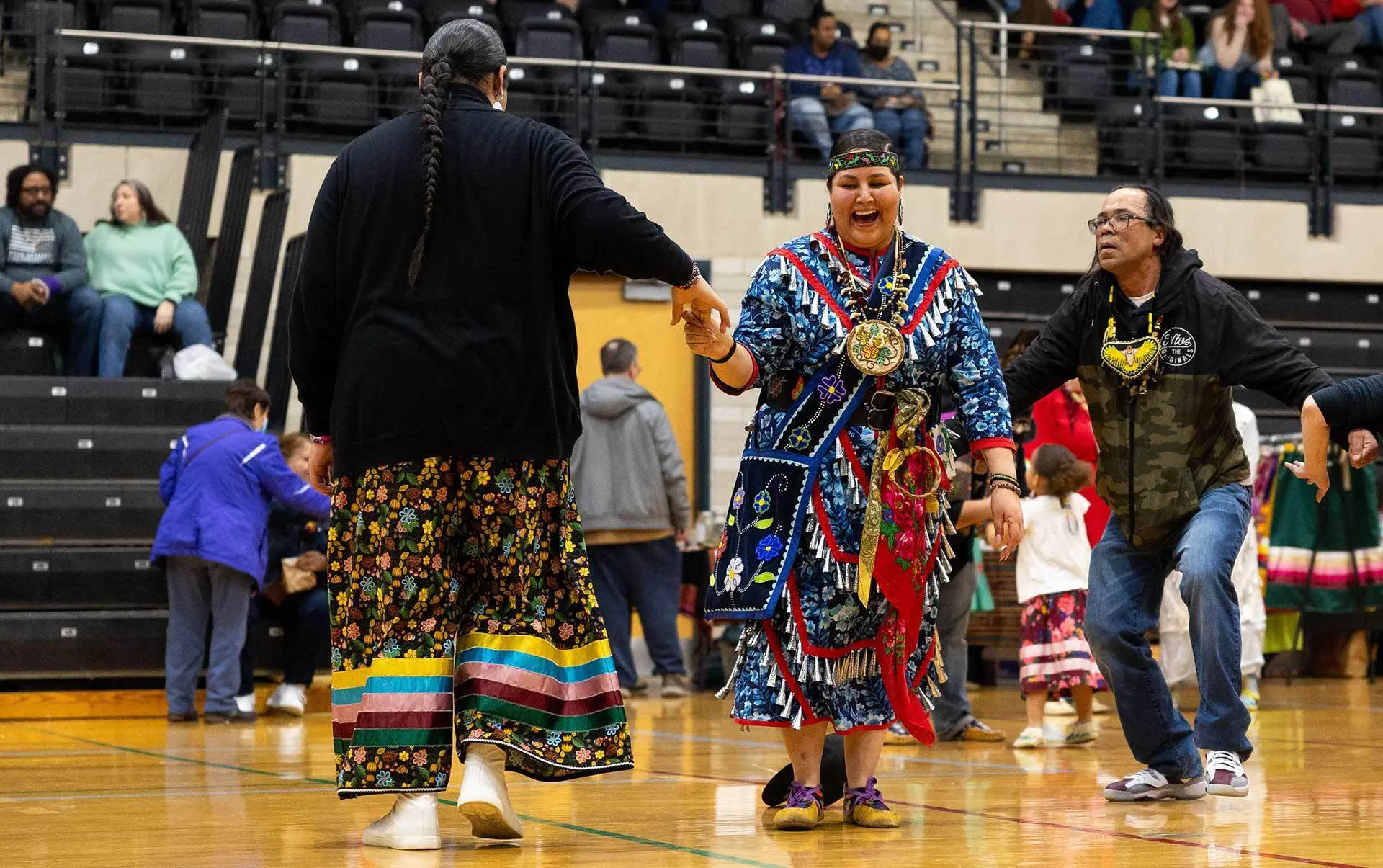
Misty Rose Nace (center), of Brokenhead Ojibway First Nation and Roseau River Anishinabe First Nation, dances with her son, Nathan, during the “sweetheart special.” The pair won both that and the potato dance competitions. (Photo by Riley Sims Ph.D. ’23)
